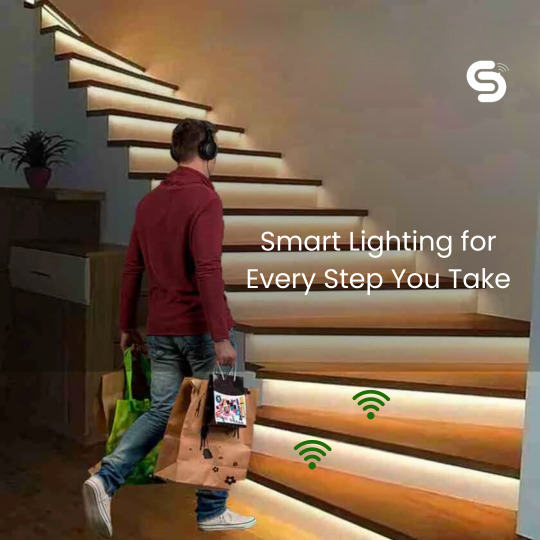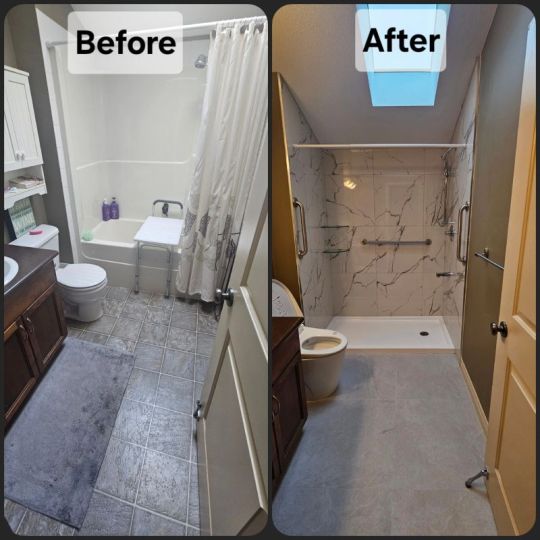#AccessibilitySolutions
Explore tagged Tumblr posts
Text
Choosing between an elevator or escalator? This guide helps you decide what fits your space, needs, and budget best.
#elevatorsvsescalators#commercialdesign#accessibilitysolutions#architecturalplanning#infrastructureneeds
1 note
·
View note
Text
Unlock Accessibility: How Audio Tagging Services Transform UX
In today’s fast-paced digital world, user experience (UX) is the linchpin of a website or app’s success. By enriching media with precise audio tags, businesses can significantly enhance accessibility and usability, making their platforms more inclusive. EnFuse Solutions India offers cutting-edge UX improvement services to help businesses thrive in the competitive digital marketplace.
#TaggingServices#AudioTaggingServices#AccessibilitySolutions#InclusiveUX#AudioAccessibility#DigitalInclusion#EnhancedUserExperience#AccessibleDesign#UXForAll#AudioMetadata#AssistiveTechnology#UXInnovation#EnFuseSolutions#EnFuseSolutionsIndia
0 notes
Text
Coworker Spots Early Onset Parkinson’s Over Zoom

San Francisco, CA — What started as a routine Monday standup over Zoom ended in a life-changing discovery for 38-year-old product designer Alex Romero, whose early-stage Parkinson’s disease was first spotted—not by a doctor—but by a colleague on the other end of a video call.
“I thought it was just lag,” said Jared Lin, a backend engineer who had worked remotely with Romero for nearly two years. “But there was this subtle, repetitive head tremor that kept happening. It didn’t sync with the usual video glitches. It just seemed... off.” Lin’s initial hesitation to bring it up stemmed from a fear of overstepping. But the movement looked hauntingly familiar—his grandfather had lived with Parkinson’s for nearly a decade, and the early signs had left a lasting impression. After a few weeks of quiet observation, Lin carefully messaged Romero.
Romero, at first, was skeptical. “I figured it was nothing—maybe nerves, or too much caffeine,” he said. “But the fact that Jared noticed something and had the courage to say it? That stayed with me. I booked a neurology appointment a week later.” The visit led to confirmation of what Lin had feared but Romero hadn’t expected: early-stage Parkinson’s disease.
Parkinson’s is a progressive neurological disorder that primarily affects movement. It begins when nerve cells in a part of the brain called the substantia nigra start to die or become impaired. These cells are responsible for producing dopamine, a chemical messenger essential for smooth, coordinated muscle movements. As dopamine levels fall, patients begin to experience a range of symptoms—most commonly tremors, stiffness, slowness of movement, and impaired balance. Over time, it can also affect speech, facial expression, mood, sleep, and even cognitive abilities.
Romero had only noticed the occasional tightness in his shoulders and some mild hand shakiness when typing fast—subtle signs he had chalked up to stress or ergonomics. “I never imagined it was neurological,” he admitted. But catching it early made a major difference. “Most people aren’t diagnosed until symptoms start interfering with daily life—by then, a majority of the brain’s dopamine-producing neurons are already gone,” said Dr. Meera Vasan, a neurologist at UCSF familiar with cases like Romero’s. “When we catch it early, we can shift the course of the disease.”
Romero began treatment soon after, starting with low-dose dopamine agonists and a tailored physical therapy regimen that focuses on coordination and balance. He also incorporated regular aerobic exercise, a practice increasingly shown to slow symptom progression. “It’s not just about managing what’s happening now,” he said. “It’s about staying ahead of what could happen next.”
His diagnosis comes at a time of growing optimism in Parkinson’s research. Experimental gene therapies aimed at correcting the faulty mechanisms that lead to neuron loss are now entering advanced clinical trials, while stem cell transplants show promise in replacing damaged cells entirely. Meanwhile, a new drug called Nuralex, recently approved by the FDA, is helping patients stabilize motor function by enhancing dopamine signaling and cellular energy metabolism. It’s not a cure—but it represents a turning point in how early-stage cases like Romero’s can be managed.
Digital tools are also changing the landscape of care. Wearable monitors and AI-assisted apps now help patients and doctors track subtle fluctuations in symptoms in real time, making treatment plans more responsive and precise. For someone like Romero, who spends most of his time in a digital workspace, the idea that technology helped identify the problem—and might help manage it—isn’t lost. “It’s ironic,” he said. “The same screen where I noticed something was off became the portal to getting help.”
Romero has since become a quiet advocate within his workplace, encouraging others not to ignore strange changes in their health—and not to be afraid of speaking up for others. “Had Jared not said anything, I might have written it off for another year or more,” he said. “Now I’m ahead of it. I have a plan. I have time.”
The company, which asked not to be named for privacy reasons, has praised the two coworkers for their awareness and compassion. HR is now exploring ways to expand wellness offerings to include neurological education and early-screening resources.
As for Lin, he still downplays the role he played. “I’m not a doctor,” he said, “but sometimes noticing something—just paying attention—can make all the difference.” And in this case, it may have meant the difference between slow decline and proactive control, all thanks to a brief conversation that began over a screen.
Source: Coworker Spots Early Onset Parkinson’s Over Zoom
0 notes
Link
#accessibilitysolutions#cloudworkflows#creativeeconomies#CreativeTechnology#digitalartisans#mobiledesigndemocratization#platformexpansion#regionalinnovation
0 notes
Text

Want a Stair Lift That Doesn’t Stand Out? 👀🏠 You’re not alone. Many homeowners prefer a solution that blends seamlessly into their space — and we’ve got just the answer.
In our latest guide, discover: ✅ Why discretion matters for many families ✅ Practical tips to keep your stairlift subtle ✅ How to prioritise discreet design without compromising function ✅ Answers to the most common FAQs
Whether you're concerned about space, aesthetics, or privacy — a discreet stairlift can make a big difference in your daily life.
🔗 Learn more here: https://reconditionedstairliftprices.co.uk/discreet-stairlifts/
#DiscreetStairlifts#HomeMobility#StairliftDesign#AccessibilitySolutions#ReconditionedStairliftPrices#StairliftTips#MobilitySupport
0 notes
Text
32 Channel Staircase Controller
Light Up Your Stairs: The Ultimate Guide to the 32 Channel Staircase Controller by ESYSENSE
Beyond connecting the floors of your house, staircases can be more style and safety oriented in your home or building. ESYSENSE is an innovative 32 Channel Staircase Controller for taking staircase lighting to another level with smart technology and dramatic effects. Let's go ahead and see how it works and why it becomes a game-changer for staircase lighting.

What is a 32 Channel Staircase Controller?
The 32 Channel LED Motion Sensor Controller for LED Staircase Lighting is a smart lighting device that controls individual LED lights for each of your steps. It can lighten each step with up to 32 channels, creating elegant and functional lighting effects, with the controller using sensors to detect movement and have the lights only turn on when necessary.
Whether you’re walking upstairs or downstairs, the controller activates the lights step by step, giving a modern, automated touch to your staircase.
How Does It Work?
Here’s a simple breakdown of how the 32 Channel Staircase Controller operates:
• Motion Detection: The controller uses infrared (IR) detect when someone approaches the staircase. Once motion is detected, the lights turn on automatically.
• Step-by-Step Illumination: As you walk up or down the stairs, the lights will activate in sequence, lighting up each step as you move.
• Auto-Off Feature: Once you have left the stairs, the lights automatically turn off after a given time, saving energy.
• Customizable Settings: You can adjust brightness levels, delay times, and lighting effects to suit your needs.
Why Choose the 32 Channel Staircase Controller by ESYSENSE?
The advantages of the Motion Sensor Light system are as follows:
1. Safety Improvement
Moving up and down the stairs in the dark can be dangerous, particularly for kids and the aged. Every step is well-lit, so the chances of slipping or falling are low.
2. Contemporary Style
This step-by-step lighting effect adds a sleek, futuristic look to your staircase. It is an easy way to make your home or building look more high-tech and stylish.
3. Energy Efficiency
Unlike traditional lights that stay on unnecessarily, the motion sensor lights only activate when needed. This helps save electricity and lowers your utility bills.
4. Easy Installation
This is a controller which is intended for use with a plug-and-play set up and can, therefore, easily be implemented within your LED lighting set-up. It requires no intricate wiring.
5. Personalizable Lighting Effects
You have options to vary the level of brightness that the lights display and for how long the lights should be active. You may also program distinct patterns of lighting for personalized touch.
Applications of 32 Channel LED Motion Sensor Controller
This is an adaptable staircase controller, suitable for any type of space:
• Residential Homes: Add a touch of luxury and safety to your home's staircase.
• Commercial Buildings: Make an impression on clients and visitors with smart, automated lighting.
• Hotels: Elevate the guest experience with elegant staircase lighting.
• Public Spaces: Improve safety and aesthetics in busy areas.
Features That Make It Stand Out
Individual Step Control
The ability to control up to 32 separate LED channels means each step can be lit individually. This is perfect for creating dynamic lighting effects that make your staircase stand out.
Durable and Long-Lasting
Built with high-quality materials, the 32 Channel Staircase Controller is designed to work seamlessly with LED lights, ensuring longevity and reliability.
Adjustable Timers and Brightness
You are in control of how long the lights stay on and how bright they are. This flexibility allows you to tailor the system to your specific needs.
Wide Sensor Compatibility
The controller works with PIR sensors, providing accurate motion detection in various lighting conditions.
How to Install the Staircase Controller
Setting up the 32 Channel LED Motion Sensor Controller for LED Staircase Lighting is straightforward:
1. Prepare Your LED Lights: Make sure your LED lights are compatible with the controller.
2. Connect the Controller: Use the simple wiring diagram to connect the controller to your lights.
3. Install Motion Sensors: Mount the motion sensors at the top and bottom of the staircase for maximum coverage.
4. Customize Settings: Change the brightness, delay times, and effects to your liking.
5. Test the System: Walk up and down the stairs to ensure the lights react appropriately.
Transform Your Staircase Today
The 32 Channel Staircase Controller by ESYSENSE is much more than a lighting device; it's a transformation of your staircase into something modern, safe, and energy-efficient. Be it enhancing safety, adding style, or saving energy, this motion sensor light system has all that covered.
Imagine walking up a perfectly illuminated staircase where each step brightens as you move on. It's not only practical but also magical. Upgrade your staircase lighting today and experience the difference that can be made by 32 Channel Staircase Controller.
#32 Channel Staircase Controller#StaircaseController#HomeAutomation#SmartHome#InteriorDesign#StaircaseDesign#HomeImprovement#ModernLiving#TechInHome#SmartStairs#HomeGadgets#InnovativeDesign#AccessibilitySolutions#HomeTechnology#StaircaseInnovation#Esysense
0 notes
Text
Grab Bar Installation Mundelein 60060
Ensure safety and accessibility with professional grab bar installation in Mundelein, 60060. Ideal for bathrooms, hallways, and other key areas of your home. https://www.handymanproservices.com/services/grab-bar-2/
0 notes
Text
Incorporating closed captioning, screen readers, and alternative text options ensures that eLearning content is accessible to all, including those with visual or auditory impairments. By embracing these solutions, we create an inclusive digital environment where every learner can thrive
0 notes
Text
Unlocking Accessibility: The Impact of Stairlifts on Home Design
What Are Stairlifts? Stairlifts, also known as stairway lifts, are mechanical devices designed to transport individuals up and down staircases who have difficulty using standard stairs. Generally consisting of a chair or sitting platform with a seat belt, stairlifts are powered by an electric motor that moves along a track installed inside or outside the stairway. Different models lift and lower either straight or along a curved track to accommodate different stairwell designs.
Indoor vs Outdoor Stairlifts Stairlifts primarily come in two varieties - indoor and outdoor models. Indoor stairlifts are suited for use inside homes and have features optimized for interior environments like operation in tighter spaces or around corners. Outdoor stairlifts are designed to withstand weather elements and typically have enhanced safety features for exposed outdoor use up and down exterior staircases.
Operating Mechanisms Most modern stairlifts operate using one of two main mechanisms - rail systems or hinge systems. Rail systems employ a wheeled carriage that glides along an overhead or floor-mounted rail or track installed at the stairs. Hinge systems make use of levers and links to maneuver the chair in sync with the staircase contour without requiring a rail. DC battery-powered electric motors provide the lifting and lowering operation.
Safety Features Given the safety-sensitive application, stairlifts are equipped with various mechanisms to prevent accidents. Seat belts and safety sensors stop the lift if obstructed during transit. Emergency stops allow users to halt operation at any point. Fold-away arms and swivel seats facilitate easy embarking and disembarking. Dual rail and power systems ensure uninterrupted function even if one system fails. Alarms alert users to potential issues needing maintenance.
Customizable Options Manufacturers offer a variety of customizable features to suit diverse needs. Battery types like sealed or removable allow different usage profiles. Remote controls and call/send options provide convenience. Heating and cooling features keep users comfortable year-round. Tilt and turn functions aid transfers. Adjustable seat heights optimize ergonomics. Material selections like wood or carbon fiber suit different aesthetic preferences. Anti-slip footrests enhance safety.
Installation Requirements Stairlift installation requires assessing several aspects like stair dimensions, landings, structure design and ambient lighting conditions. Permits are often necessary for electrical and construction works. Professional evaluation ensures choosing the right stairlift model, rail type, battery size etc. Technicians perform testing and safety checks before final commissioning. Periodic servicing and repairs ensure continued safe functioning. Proper disposal methods follow when replacements become necessary.
Applications in Healthcare Settings Beyond domestic use in homes, stairlifts also find widespread adoption in healthcare facilities to assist limited mobility patients, residents and staff to traverse staircases safely. Hospitals, nursing homes, rehab centers and assisted living communities regularly employ stairlifts of varied specifications in clinical areas and between floors to serve client mobility needs 24/7 without compromising workplace safety. Integrating suitable stairlift models aids facilities to conform to accessibility standards.
Advancements in Stairlift Technology Modern innovations continuously work to make stairlifts more user-friendly and efficient. App-based remote controls offer enhanced flexibility. Sensors and artificial intelligence help navigate congested areas. Foldable designs facilitate portability and storage. Improved batteries deliver extended run times on single charges. Advances in materials and manufacturing render products lighter yet sturdier. Motion-activated sensors automatically deploy stairs for easy access. Upgrades in ergonomics and comfort make stairlift usage more amenable for all.
Benefits of InstallingStairlifts By overcoming access barriers posed by staircases, stairlifts deliver tangible advantages to users by promoting independence, safety, comfort and convenience. Families cope better caring for aging loved ones who can stay in multi-level homes comfortably. Empty nesters remain socially engaged without relocating. Those recovering from injuries regain quicker mobility to return to routine tasks. Healthcare facilities optimize resources catering patients efficiently between floors. Overall, stairlifts empower an enhanced quality of life for people facing physical challenges negotiating stairs.
Conclusion Stairlifts occupy an indispensable role in assisting the mobility impaired population access living spaces by safely transporting them up and down staircases. Constant innovations nurture more user-friendly, efficient and accommodative stairlift technology. When professionally installed and serviced, stairlifts present a viable solution enhancing independent living for those hindered by stairs in their daily environment.
0 notes
Text

Accessibility is the bridge to inclusivity, making the digital world open to all. This truth resonates profoundly in today’s interconnected society, where digital accessibility services are not just a technical necessity but a moral imperative. Click Here To Read More:https://rb.gy/1x8yxd #AccessibleMindsTech, #AccessibleMinds, #accessibilityexperts, #AccessibilitySolutions, #AccessibleMindsTech, #AccessibleMinds, #AccessibilityEvaluation, #AccessibilityEvaluationServices #AccessibilityEvaluationExperts, #accessibilitycomponent, #fixingaccessibilitycomponent.
#Accessible Minds Tech#Accessible Minds#accessibility experts#Accessibility Solutions#Accessibility Evaluation#Accessibility Evaluation Services#Accessibility Evaluation Experts#accessibility component#fixing accessibility component#Recommendations for fixing accessibility component#Accessibility component recommendations#Drafting Voluntary Product Accessibility Template#Drafting VPAT services#VPAT’s developing services#Accessibility Design Review#Design Review for Accessibility#Accessibility visual elements review#Website Accessibility Remediation#Accessibility remediation and fixing services#Website Remediation and Fixing Services#Document Accessibility Services#Document testing and remediation#Document accessibility testing and remediation#Web Accessibility Development Services#Web Accessibility services#Web Accessibility Development experts#Digital Accessibility Testing Services#Accessibility Testing Services#Digital accessibility services
1 note
·
View note
Text
Making a PDF Accessible: Episode 4 |Glendale College
Struggling with making your PDFs accessible? Learn about common challenges and effective solutions in this blog post. #AccessiblePDFs #PDFAccessibility #AccessibilityChallenges #AccessibilitySolutions
Welcome to episode four on making college PDFs accessible. Today, we focus on Glendale Community College’s Disabled Students Programs and Services (DSPS) newsletter for summer 2023. Video Guide In case you missed them, here are Episode 1, Episode 2 and Episode 3 in our Making Accessible PDFs: Community College Series. Key Takeaways From This Episode This document was originally made in Canva.…

View On WordPress
#Accessibility Challenges#Accessibility Solutions#Accessible Documents#Accessible PDFs#adobe acrobat#pdf accessibility#section 508
0 notes
Text
Coworker Spots Early Onset Parkinson’s Over Zoom

San Francisco, CA — What started as a routine Monday standup over Zoom ended in a life-changing discovery for 38-year-old product designer Alex Romero, whose early-stage Parkinson’s disease was first spotted—not by a doctor—but by a colleague on the other end of a video call.
“I thought it was just lag,” said Jared Lin, a backend engineer who had worked remotely with Romero for nearly two years. “But there was this subtle, repetitive head tremor that kept happening. It didn’t sync with the usual video glitches. It just seemed... off.” Lin’s initial hesitation to bring it up stemmed from a fear of overstepping. But the movement looked hauntingly familiar—his grandfather had lived with Parkinson’s for nearly a decade, and the early signs had left a lasting impression. After a few weeks of quiet observation, Lin carefully messaged Romero.
Romero, at first, was skeptical. “I figured it was nothing—maybe nerves, or too much caffeine,” he said. “But the fact that Jared noticed something and had the courage to say it? That stayed with me. I booked a neurology appointment a week later.” The visit led to confirmation of what Lin had feared but Romero hadn’t expected: early-stage Parkinson’s disease.
Parkinson’s is a progressive neurological disorder that primarily affects movement. It begins when nerve cells in a part of the brain called the substantia nigra start to die or become impaired. These cells are responsible for producing dopamine, a chemical messenger essential for smooth, coordinated muscle movements. As dopamine levels fall, patients begin to experience a range of symptoms—most commonly tremors, stiffness, slowness of movement, and impaired balance. Over time, it can also affect speech, facial expression, mood, sleep, and even cognitive abilities.
Romero had only noticed the occasional tightness in his shoulders and some mild hand shakiness when typing fast—subtle signs he had chalked up to stress or ergonomics. “I never imagined it was neurological,” he admitted. But catching it early made a major difference. “Most people aren’t diagnosed until symptoms start interfering with daily life—by then, a majority of the brain’s dopamine-producing neurons are already gone,” said Dr. Meera Vasan, a neurologist at UCSF familiar with cases like Romero’s. “When we catch it early, we can shift the course of the disease.”
Romero began treatment soon after, starting with low-dose dopamine agonists and a tailored physical therapy regimen that focuses on coordination and balance. He also incorporated regular aerobic exercise, a practice increasingly shown to slow symptom progression. “It’s not just about managing what’s happening now,” he said. “It’s about staying ahead of what could happen next.”
His diagnosis comes at a time of growing optimism in Parkinson’s research. Experimental gene therapies aimed at correcting the faulty mechanisms that lead to neuron loss are now entering advanced clinical trials, while stem cell transplants show promise in replacing damaged cells entirely. Meanwhile, a new drug called Nuralex, recently approved by the FDA, is helping patients stabilize motor function by enhancing dopamine signaling and cellular energy metabolism. It’s not a cure—but it represents a turning point in how early-stage cases like Romero’s can be managed.
Digital tools are also changing the landscape of care. Wearable monitors and AI-assisted apps now help patients and doctors track subtle fluctuations in symptoms in real time, making treatment plans more responsive and precise. For someone like Romero, who spends most of his time in a digital workspace, the idea that technology helped identify the problem—and might help manage it—isn’t lost. “It’s ironic,” he said. “The same screen where I noticed something was off became the portal to getting help.”
Romero has since become a quiet advocate within his workplace, encouraging others not to ignore strange changes in their health—and not to be afraid of speaking up for others. “Had Jared not said anything, I might have written it off for another year or more,” he said. “Now I’m ahead of it. I have a plan. I have time.”
The company, which asked not to be named for privacy reasons, has praised the two coworkers for their awareness and compassion. HR is now exploring ways to expand wellness offerings to include neurological education and early-screening resources.
As for Lin, he still downplays the role he played. “I’m not a doctor,” he said, “but sometimes noticing something—just paying attention—can make all the difference.” And in this case, it may have meant the difference between slow decline and proactive control, all thanks to a brief conversation that began over a screen.
Source: Coworker Spots Early Onset Parkinson’s Over Zoom
0 notes
Photo

Ensure wider reach and more visibility for your marketing content with files accessibility platform. Make PDF accessible for all users easily and in less time with us. Register Free at- https://filesaccessibility.com/
0 notes
Text

How To Make Your Home Accessible for All Without Spending A Fortune?
Making your home accessible for all doesn’t have to break the bank. There are various simple and cost-effective ways to improve accessibility more details https://bit.ly/4jdvkby
#CairoContractingLtd #AccessibilitySolutions #vancouverbc #homeappliances #costeffective #HomeSafety
0 notes
Text

There are 1.3 billion people universally living with some form of disability. This staggering figure isn’t just a statistic, it’s a clarion call to businesses everywhere. Accessibility is no longer an optional feature but a fundamental requirement for creating an inclusive digital landscape. Click Here To Read More:https://rb.gy/qovro3 #AccessibleMindsTech, #AccessibleMinds, #accessibilityexperts, #AccessibilitySolutions, #AccessibleMindsTech, #AccessibleMinds, #AccessibilityEvaluation, #AccessibilityEvaluationServices #AccessibilityEvaluationExperts, #accessibilitycomponent, #fixingaccessibilitycomponent.
#Accessible Minds Tech#Accessible Minds#accessibility experts#Accessibility Solutions#Accessibility Evaluation#Accessibility Evaluation Services#Accessibility Evaluation Experts#accessibility component#fixing accessibility component#Recommendations for fixing accessibility component#Accessibility component recommendations#Drafting Voluntary Product Accessibility Template#Drafting VPAT services#VPAT’s developing services#Accessibility Design Review#Design Review for Accessibility#Accessibility visual elements review#Website Accessibility Remediation#Accessibility remediation and fixing services#Website Remediation and Fixing Services#Document Accessibility Services#Document testing and remediation#Document accessibility testing and remediation#Web Accessibility Development Services#Web Accessibility services#Web Accessibility Development experts#Digital Accessibility Testing Services#Accessibility Testing Services#Digital accessibility services
0 notes
Text
Make Documents Accessible
Now, make documents accessible in a hassle free manner with #FilesAccessibility. With solutions for all kinds of documents such as medical bill, research journals, corporate presentations or legal documents, our experts ensure 100% accessibility. The special team of testers scan thoroughly to make sure that your files are accessible across devices and platforms. Register Now at https://www.filesaccessibility.com/ #MakeDocumentsAccessible #AccessibilitySolutions

0 notes
Text
Coworker Spots Early Onset Parkinson’s Over Zoom

San Francisco, CA — What started as a routine Monday standup over Zoom ended in a life-changing discovery for 38-year-old product designer Alex Romero, whose early-stage Parkinson’s disease was first spotted—not by a doctor—but by a colleague on the other end of a video call.
“I thought it was just lag,” said Jared Lin, a backend engineer who had worked remotely with Romero for nearly two years. “But there was this subtle, repetitive head tremor that kept happening. It didn’t sync with the usual video glitches. It just seemed... off.” Lin’s initial hesitation to bring it up stemmed from a fear of overstepping. But the movement looked hauntingly familiar—his grandfather had lived with Parkinson’s for nearly a decade, and the early signs had left a lasting impression. After a few weeks of quiet observation, Lin carefully messaged Romero.
Romero, at first, was skeptical. “I figured it was nothing—maybe nerves, or too much caffeine,” he said. “But the fact that Jared noticed something and had the courage to say it? That stayed with me. I booked a neurology appointment a week later.” The visit led to confirmation of what Lin had feared but Romero hadn’t expected: early-stage Parkinson’s disease.
Parkinson’s is a progressive neurological disorder that primarily affects movement. It begins when nerve cells in a part of the brain called the substantia nigra start to die or become impaired. These cells are responsible for producing dopamine, a chemical messenger essential for smooth, coordinated muscle movements. As dopamine levels fall, patients begin to experience a range of symptoms—most commonly tremors, stiffness, slowness of movement, and impaired balance. Over time, it can also affect speech, facial expression, mood, sleep, and even cognitive abilities.
Romero had only noticed the occasional tightness in his shoulders and some mild hand shakiness when typing fast—subtle signs he had chalked up to stress or ergonomics. “I never imagined it was neurological,” he admitted. But catching it early made a major difference. “Most people aren’t diagnosed until symptoms start interfering with daily life—by then, a majority of the brain’s dopamine-producing neurons are already gone,” said Dr. Meera Vasan, a neurologist at UCSF familiar with cases like Romero’s. “When we catch it early, we can shift the course of the disease.”
Romero began treatment soon after, starting with low-dose dopamine agonists and a tailored physical therapy regimen that focuses on coordination and balance. He also incorporated regular aerobic exercise, a practice increasingly shown to slow symptom progression. “It’s not just about managing what’s happening now,” he said. “It’s about staying ahead of what could happen next.”
His diagnosis comes at a time of growing optimism in Parkinson’s research. Experimental gene therapies aimed at correcting the faulty mechanisms that lead to neuron loss are now entering advanced clinical trials, while stem cell transplants show promise in replacing damaged cells entirely. Meanwhile, a new drug called Nuralex, recently approved by the FDA, is helping patients stabilize motor function by enhancing dopamine signaling and cellular energy metabolism. It’s not a cure—but it represents a turning point in how early-stage cases like Romero’s can be managed.
Digital tools are also changing the landscape of care. Wearable monitors and AI-assisted apps now help patients and doctors track subtle fluctuations in symptoms in real time, making treatment plans more responsive and precise. For someone like Romero, who spends most of his time in a digital workspace, the idea that technology helped identify the problem—and might help manage it—isn’t lost. “It’s ironic,” he said. “The same screen where I noticed something was off became the portal to getting help.”
Romero has since become a quiet advocate within his workplace, encouraging others not to ignore strange changes in their health—and not to be afraid of speaking up for others. “Had Jared not said anything, I might have written it off for another year or more,” he said. “Now I’m ahead of it. I have a plan. I have time.”
The company, which asked not to be named for privacy reasons, has praised the two coworkers for their awareness and compassion. HR is now exploring ways to expand wellness offerings to include neurological education and early-screening resources.
As for Lin, he still downplays the role he played. “I’m not a doctor,” he said, “but sometimes noticing something—just paying attention—can make all the difference.” And in this case, it may have meant the difference between slow decline and proactive control, all thanks to a brief conversation that began over a screen.
Source: Coworker Spots Early Onset Parkinson’s Over Zoom
0 notes
Text

New Year's Resolutions for All Abilities - Creating a New Year’s resolution focused on making your home more accessible is a wonderful goal! Here are some ideas for improving accessibility in your home, which can be tailored to your specific needs or preferences: more details https://t.ly/vKk-E
#CairoContractingLtd #AccessibilitySolutions #accessibility #HomeSafety
0 notes
Text

Give your old parents the gift of Love this Christmas! Get your bathrooms modified to a barrier free Bathroom with skirted pot and electronic bidet for enhanced accessibility and comfort.
#CairoContractingLtd#accessibility#AccessibilitySolutions#bathroomrenovation#bathroommodification#walkinshower#BarrierFreeBathroom
0 notes